|
|
KOTIČEK ZA UČITELJE/TEACHERS' CORNER |
|
1. INTRODUCTION:
- ask some questions about whales
- pupils listen to the tape (Tom Hutchinson: PROJECT 2, p 64, ex 4) and do the exercise
- check their answers:
- project the drill below on the OHP
- use the ball to pracice the drill:
- pupil A asks the first question and throws the ball to another one
- s/he answers the question, throws the ball to the third pupil and asks the next question etc.
| A: What’s number 1?
B: It’s _______________. A: Has it become extinct? B: Yes. A: How long has it been extinct? B: It’s been extinct since / for _______________. |
|
A: What’s number 1?
B: It’s _______________. A: Has it become extinct? B: No. A: How many are there now? B: _______________. |
- project the answers on OHP
- after a certain animal has been discussed, play its sound on the computer
- devide the class into four groups:
- first group: dodo
- second group: bison
- third group: tarpan and oryx
- fourth group: orangutan
- give them the handouts
- they look for the new words in the dictionaries
- they do the exercises
- check their answers as they are working
- groups report about the animals to the class
- reorganise the groups from the previous lesson (different pupils from different groups are together)
- give them the handouts with exercises
- while the groups are working with the handouts, call pupils (in pairs or threes to work with the computer (HIGGINS - ECLIPSET or SEQUITOUR)
- check the answers of the groups as they are working
Pupils learn the new words.
SUGGESTED FURTHER PROJECT WORK: Pupils write about other animals in danger
NOTES:
1. Group pupils carefully, so everybody can support each other and
work hard at the same time.
2. The texts are quite difficult, so at the first grouping make mixed
abilities groups, so the good pupils can help the weak ones
3. The exercises on ECLIPSET are ment for the good pupils, the ones
on the SEQUITOUR are ment for weak ones
4. There are two exercises where pupils must add the missing words.
The only difference is that one is easier than the other one (the missing
words are given).
5. You needn’t go through the introduction, you can start with group
work right away and maybe just have a short introduction about animal extinction
in general.
6. My pupils worked very hard and learned a lot. Not just words, they
also learned new things about different animals.
7. We have one quite slow computer in our classroom, so we used this
one. If you have a computer room, I suggest you take your pupils there
since the work is much easier and more pupils can work with the computers
at the same time. But if you don’t have a computer at all, don’t worry.
The lesson can also be done without it. It is wise to print the animals,
so you can show them to pupils. Use “regular” dictionaries instead of electronic
ones then.
8. Don’t worry if not all the pupils do all the exercises; let them
work at their own pace.
9. PICTURES AND TEXTS ARE TAKEN FROM MICROSOFT’S ENCARTA 95
(dodo, oryx, tarpan, bison,and orangutan)

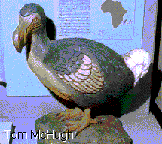
Dodo is the name of a large, flightless bird, now extinct. The Mauritius dodo once inhabited the forests of the island of Mauritius. About the size of a turkey, the bird had a large hooked bill, undeveloped wings and tail, and short, thick, yellow legs. It laid a single, large egg in a ground nest made of grass. The dodo was first reported in 1598 by Dutch colonizers, who characterized it as a sluggish bird unafraid of humans. Dodos were last observed in 1681. The speedy extinction of the species is attributed in part to domestic animals imported to Mauritius by the settlers; animals such as hogs escaped to the woods, multiplied, and destroyed many of the dodo eggs. The name dodo is derived from the Portuguese word duodo, meaning silly or stupid. In present-day usage the word dodo is applied to a simple-minded person unable to adjust to new situations and ideas.
I. Find the following words in the text and say what the words mean:1. flightless
2. settler
3. simple-minded
4. speedy
5. a hooked bill (draw a picture of it)
6. spieces
7. observe
8. nest
9. inhabit
10. adjust
11. hog
12. sluggish
II. Read the text about dodo and answer the questions:1. Where did dodo live?
2. How big was it?
3. What did it look like?
5. How many eggs did it lay?
6. Where did it lay its eggs?
7. When was it first seen and by whom?
8. When did it become extinct?
9. Why did it become extinct?
10. What does its name mean?
III. Now prepare a short report about dodo for the rest of the class:

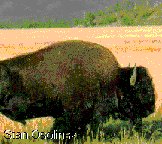
Bison is one of the largest animal in North America, where it is usually
called buffalo. The bison is characterized by a hump over the front shoulders
and short, sharply pointed horns (in both sexes) curving outward and up
from the sides of the massive head. A mature bull of the North American
bison is about 2 m high at the hump and 2.7 to 3.7 m long and weighs 850
to 1100 kg; the female is smaller. The head, neck, forelegs, and front
parts of the body have a thick coat of long, dark hair. The rear part of
the body is covered with much shorter hair. The adult bull usually has
a black beard about 30 cm long.
Bisons are usually found in groups, except for old, solitary bulls.
Most of the year females with young form small bands, and immature bulls
may stay with them. Mature males have their own groups. The bands may congregate
in large herds in the spring or fall to search for food or water. The roar
of rutting bulls, audible at nearly 5 km, is heard most often in mating
season, mainly from July to September, when bulls go looking for cows.
Breeding bulls have little time to eat and lose more than 90 kg during
mating season. A single yellow-red calf is born. After a few days the calf
can keep up with the herd and follows its mother until the following spring.
The European bison, taller but lighter than the American bison, is
almost extinct; a few exist in parks and zoos.
Until the 19th century, as many as 60 million bison lived on the Great
Plains from Mexico into Canada, and some were found east of the Mississippi
River. American Indians used them for food, shelters, and bone tools. From
1830 to 1889, methodical destruction by white settlers, for sport and fur,
reduced this number to less than 1000. Today about 30,000 bisons live in
protected areas and on private ranches.
1. shelter
2. curving outward
3. audible
4. weigh
5. congregate
6. tools
7. thick
8. breeding bulls
9. fall
10. reduce
11. forelegs
12. horn
13. roar of rutting bulls
14. mating season
15. protect
16. calf
17. mature
18. destruction
II. Read the text about bison and answer the questions:1. Is bison the larget animal in the world?
2. What does it look like?
3. What are its measures?
4. When is bison’s mating season?
5. How many babies does a cow have and what do they look like?
6. Is the European bison completely extinct?
7. How many bisons were there at the beginning of the 19th century?
8. What did the Indians use bisons for?
9. Why did the bison become almost extinct?
10. How many and where do bisons live nowadays?
III. Now prepare a short report about bison for the rest of the class:

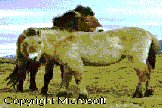
Tarpan was a small species of wild horse, which is now extinct. The tarpan had a stocky body and short legs, and stood about 1.2 to 1.35 m high at the shoulder. In color it was generally gray. The tail and mane were black. Most of the herds were hunted down and killed because of their destructiveness to crops and the loss of domestic horses to their roaming bands. The tarpans survived until the late 19th or early 20th century.
I. Find the following words in the text and say what the words mean:1. crop
2. wild
3. roaming bands
4. mane
5. stocky body
6. species
7. destructiveness
II. Read the text about tarpan and answer the questions:
1. Was tarpan a domestic horse?
2. Describe it.
3. What were its measures?
4. Why did it become extinct?
5. When did it die out?

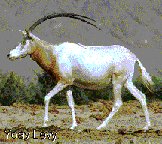
Oryx is one of the antelopes of Africa and the Middle East. Three species of these large, straight-horned mammals exist, of which the best known is the gemsbok. The white oryx and the Arabian oryx are both listed as endangered species. The animal can weigh more than 200 kg, stands as high as 1.4 m at the shoulder, and has horns of nearly equivalent length.
I. Find the following words in the text and say what the words mean:1. endangered
2. equivalent
3. exist
4. weigh
5. horn
6. speices
7. length
8. mammal II. Read the text about oryx and answer the questions:
1. What does oryx mean?
2. Where does it live?
3. Describe it.
4. How much does it weigh and what are its measures?
5. Is it still alive?
III. Now prepare short reports about tarpan and oryx for
the rest of the class:
TARPAN:
ORYX:
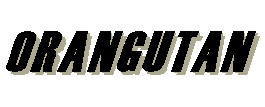
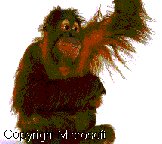
The orangutan, whose name comes from the Malay words for "man of the woods", has a high forehead that gives it a distinctly humanlike look. The male adult attains a height of about 1.4 m and a weight of about 70 kg. Twice the size of the female, the male has an air sac hanging down from its throat, which it inflates and uses to make the “long call,” a throaty series of groans that can be heard up to a kilometer away by humans. Long reddish-brown hair distinguishes it from other apes as does its habit of gathering the food individually, rather than in the groups. They live almost exclusevly in the trees and are quite clumsy on the ground, where they move slowly on all fours. Their extremely long arms reach a span of about 2 m, but the legs are short. The animals travel in small groups during the day, feeding on leaves and fruit, mainly figs. Orangutans have been observed to eat more than 200 kinds of fruit. At night they sleep in tall trees in nests built of branches and leaves. Adult males generally live alone and in many groups there are only females and young. Habitat destruction and hunting have made the orangutan an endangered species. Orangutans are found only in lowland and tropical rain forest areas of northern Sumatra and lowland Borneo.
I. Find the following words in the text and say what the words mean:1. distinguish
2. lowland
3. clumsy
4. distinctly
5. size
6. nest
7. air sac
8. groan
9. span
10. endangered
11. gather
12. exclusevly
13. habit
14. height
15. weight
16. extremely
17. inflate
18. destruction
II. Read the text about orangutan and answer the questions:1. What does the name orangutan mean?
2. Describe it.
3. How tall is it and how much does it weigh?
4. How does it make its “long call”?
5. What distinguishes it from the other apes?
6. How does it move around?
7. What does it eat?
8. Where does it sleep?
9. Why have orangutans become endangered spieces?
10. What part of the world do they live in?
III. Now prepare a short report about orangutan for the
rest of the class:
1. flightless
2. simple minded
3. speedy
4. nest
5. lowland
6. size
7. endangered
8. habit
9. destruction
10. crops
11. horn
12. tools
13. audible
14. reduce
15. protect
16. calf
17.fall (n)
Change the word in brackets to complete the sentence:1. After the earthquake the _______________ of the buildings was was
so huge, that half of the city had to be rebuilt. (destroy)
2. Because the company couldn’t sell their products, they introduced
great price _______________s. (reduce)
3. Eating at least one apple a day is a good _______________ of your
health. (protect)
4. Nowadays many animals are _______________. Unless we do something
about this problem, they will die out. (danger)
5. The _______________ of this car is 5 meters. (long)
6. The _______________ of this building is 20 meters. (high)
7. Riding a motorbike without a helmet is _______________ dangerous.
(extreme)
8. The ______________ car crshed into the house. The driver died on
the spot. (speed)
9. The _______________ of Greece are called the Greeks. (inhabit)
10. It was a clear night and a big crowd of people came to _______________
the stars. (observation)
Add the missing words (more difficult exercises).
1. The dodo was a _______________ bird. That means it had wings, but it couldn’t fly.2. Tarpan was a small _______________ of wild horse, which is now extinct.
3. A cuckoo is a bird that lays its eggs in other birds _______________s.
4. In space, the astronauts must _______________ to the conditions up there.
5. I was very _______________ the other day and I broke my glasses. I stepped on them.
6. In a shop: “Excuse me, but what’s the _______________ of this pullover?” “It’s extra large, I’m sure it will be too big for you.”
7. Smoking is a bad _______________.
8. The Titanic hit an iceberg, and because its huge _______________, it sank to the bottom of the sea.
9. Every autumn the farmers pick the _______________s and sell them on the market.
10. A rhinocerous is a large animal with two _______________ on its head.
11. “What’s the _______________ of your skies?” “They are 1.80 m long.”
12. A _______________ is a very young cow.
13. We must _______________ our planet, or one day it will be too polluted for us to live here.
14. “How much do you _______________?” “Oh, much too much. I must go on a diet.”
15. The orangutan’s “long call” is _______________ up to a kilometer away by humans.
16. It was raining heavily and because they couldn’t find a _______________, they were as wet as a drowned rat.
17. _______________ is American word for autumn.
18. A mechanic needs a lot of different _______________ to repair a car.
19. The fog was so _______________ that we couldn’t drive on. We stopped in a cheap hotel and spent the night over ther.
Add the missing words (easier exercises). Here are the words to help you:
| adjust, audible, calf, clumsy, crops, destruction, fall, flightless, habit, horns, length, nests, protect, shelter, size, species, thick, tools, weigh |
1. The dodo was a _______________ bird. That means it had wings, but
it couldn’t fly.
2. Tarpan was a small _______________ of wild horse, which is now extinct.
3. A cuckoo is a bird that lays its eggs in other birds _______________.
4. In space, the astronauts must _______________ to the conditions
up there.
5. I was very _______________ the other day and I broke my glasses.
I stepped on them.
6. In a shop: “Excuse me, but what’s the _______________ of this pullover?”
“It’s extra large, I’m sure it will be too big for you.”
7. Smoking is a bad _______________.
8. The Titanic hit an iceberg, and because its huge _______________,
it sank to the bottom of the sea.
9. Every autumn the farmers pick the _______________ and sell them
on the market.
10. A rhinocerous is a large animal with two _______________ on its
head.
11. “What’s the _______________ of your skies?” “They are 1.80
m long.”
12. A _______________ is a very young cow.
13. We must _______________ our planet, or one day it will be too polluted
for us to live here.
14. “How much do you _______________?” “Oh, much too much. I
must go on a diet.”
15. The orangutan’s “long call” is _______________ up to a kilometer
away by humans.
16. It was raining heavily and because they couldn’t find a _______________,
they were as wet as a drowned rat.
17. _______________ is American word for autumn.
18. A mechanic needs a lot of different _______________ to repair a
car.
19. The fog was so _______________ that we couldn’t drive on. We stopped
in a cheap hotel and spent the night over ther.
1. Orangutans have
reddish hair brown long
2. What animals have ?
long arms extermely
3. Many snakes are found in
rain area tropical forest
4. A buffalo has two
sharply horns short pointed
5. A dodo had
yellow thick legs short
6. The orangutan has a high forehead that gives it a
look humanlike distinctly
Match a word on the left with a word on the right:
| 1. alomst
2. wild 3. common 4. endangered 5. simple-minded 6. thick 7. bone 8. nearly 9. humanlike 10. flightless |
a) person
b) 5 kilometers c) tools d) bird e) exclusivly f) look g) animal h) name i) coat j) spieces |
|
|
|
|
|
|
|
|
|
|
|
Instructions as above.
| 1. massive
2. speedy 3. protected 4. mating 5. white 6. domestic 7. ground 8. rain 9. quite 10. nearly |
a) animal
b) extinction c) settlers d) forest e) clumsy f) heard g) area h) season i) equivalent j) nest |
|
|
|
|
|
|
|
|
|
|
|
Bisons are one of / the largest animals in
North America. / There people call / it buffalo.
/ Bisons have a hump / over their shoulders /
and a horn on their heads. / They have thick /
fur and a beard. / They live in / large herds.
/ The female bison has a single / calf once a year.
/ American Indians hunted bisons / for food, shelters
and bone tools. / The white settlers / reduced
their number / and today bisons / live in
protected areas.
DODO
Dodo was a large, / flightless bird.
/ It was as big / as a turkey. / It had a
large / hooked bill, wings and / short legs. It
laid only one / egg. It was not afraid / of people.
It has become / extinct because the settlers brought domestic
/ animals, such as / hogs, which destroyed its eggs.
/ The name / dodo means silly / or stupid.
/ Today it means a simple / - minded person.
ORANGUTAN
The name orangutan / means "man of the woods".
/ Because of its high forehead / it looks like people.
/ The male has an air / sac which hangs /
down its throat. / Orangutan fills it / with the
air / to make the "long call". / People can hear
/ it a kilometer away. / It has got long /
reddish - brown hair. / Orangutans live / in trees.
/ They are quite clumsy / on ground, / where
they move on all fours. / Orangutans eat / leaves
and fruit. / They are an / endangered species.
Zadnjič popravljeno/
Last updated:
I will be glad to receive your opinions and suggestions: EDITOR